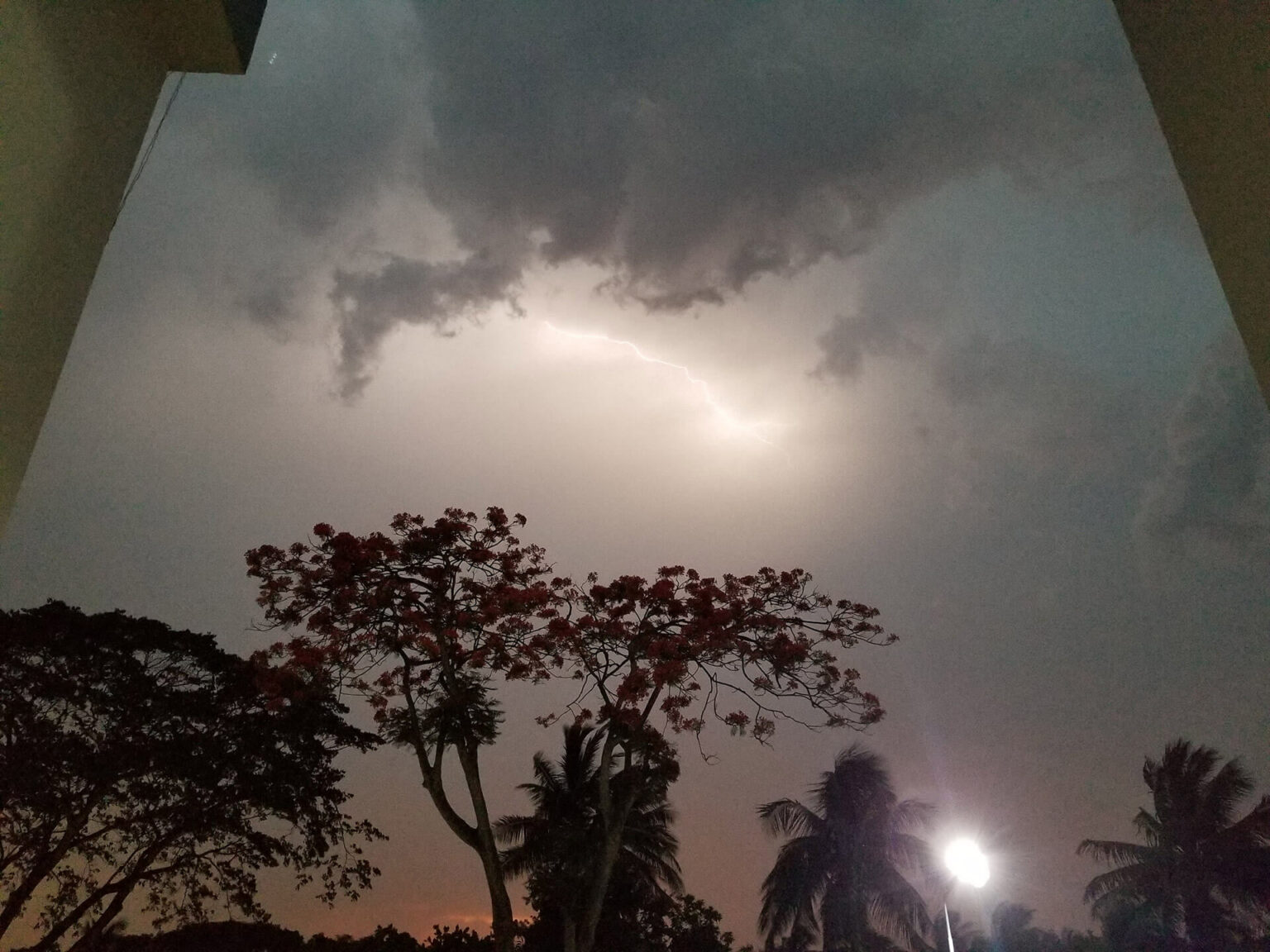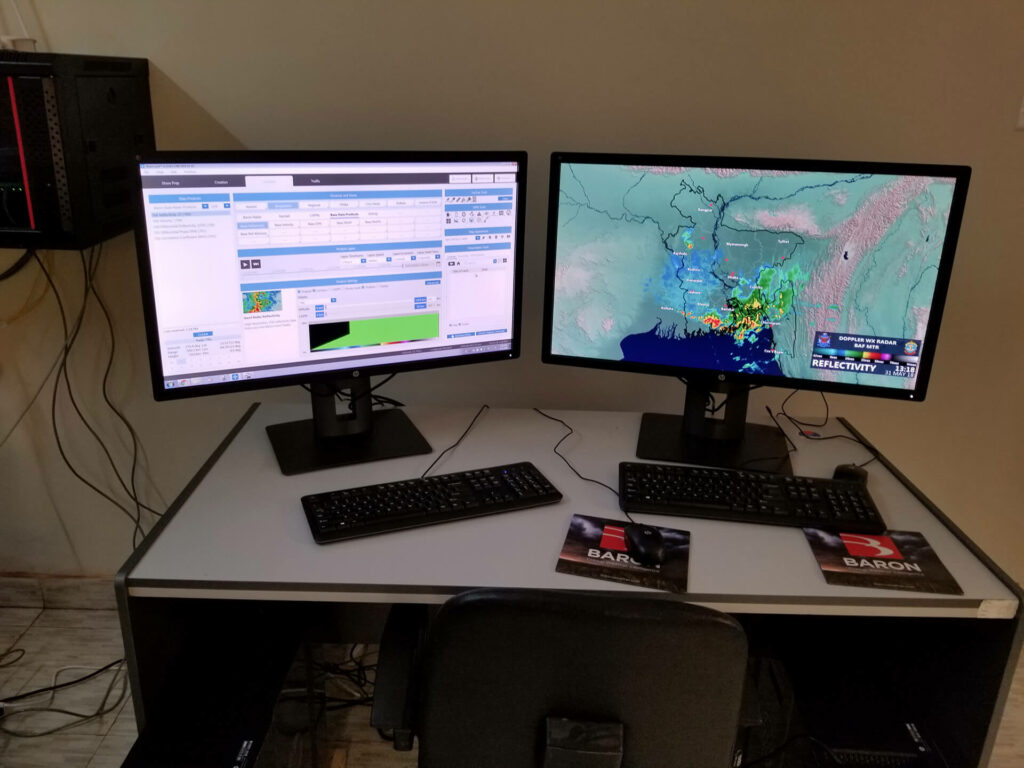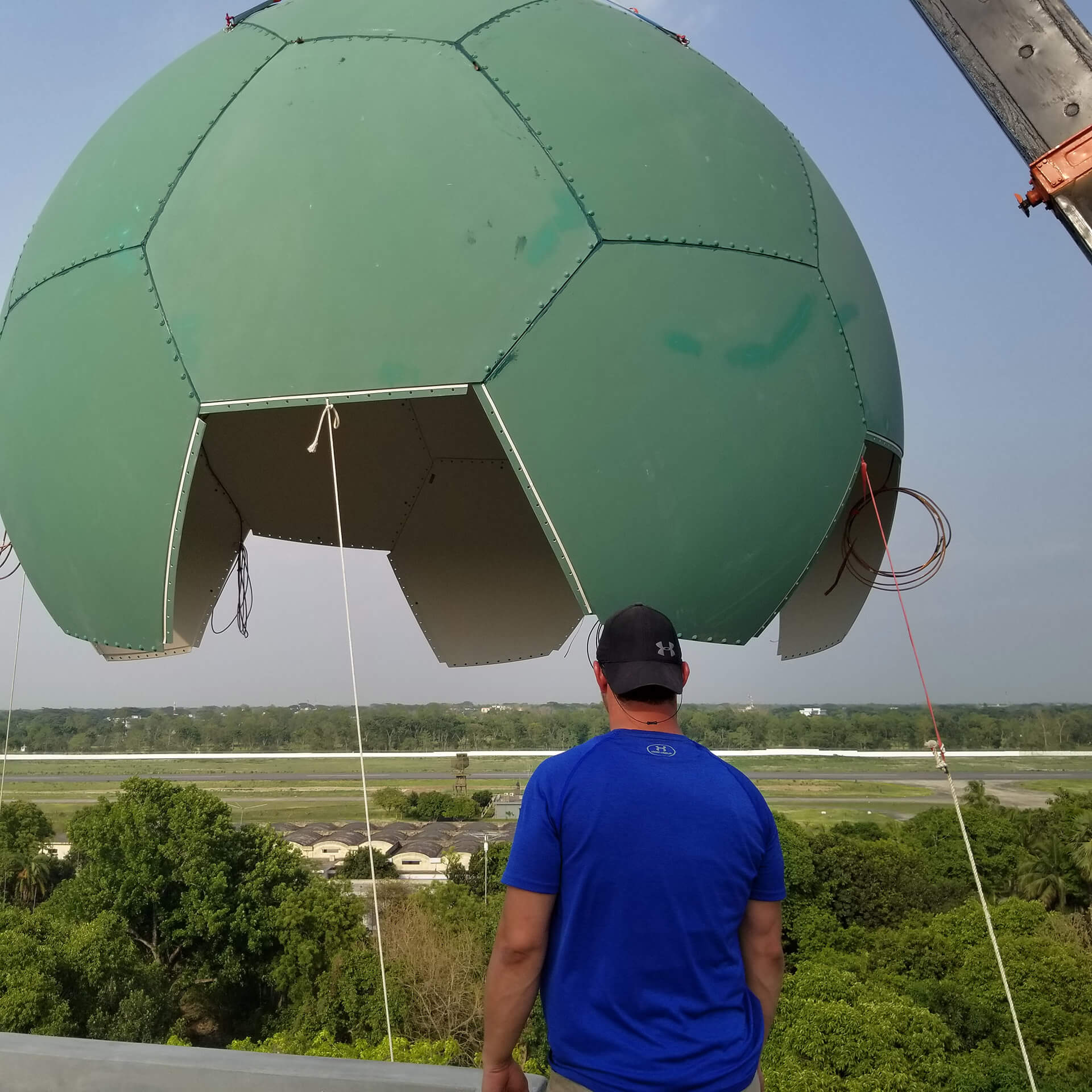In June 2018, Baron delivered a 350,000-watt C-band dual-polarization radar to the Bangladesh Air Force, which is now at work at the base in Jessore. The Air Force aimed to enhance and modernize its weather infrastructure, helping ensure pilot safety and the successful conduct of missions and flight training. Previously, Bangladesh needed to rely on external data sources for meteorological detection.
The installation came following Bangladeshi operational staff and meteorologists visiting Baron headquarters in Huntsville, Ala. for eight weeks, where the radar underwent thorough inspection and the complete Factory Acceptance Test (FAT).
The country’s weather consists primarily of lightning-producing thunderstorms that can cause safety issues and inconvenience for the Air Force and its training. “Convective storms are a common hazard in Bangladesh,” says Matt Saari, a Baron Customer Service Meteorologist who was heavily involved in the activity and installation of the new system. “The Bangladesh Air Force was looking for a radar that could accurately detect severe weather, so if a lightning-producing storm was approaching, they could adjust their flight training zones accordingly.”

This Baron Gen3 radar will give the Air Force various features that will aid the Air Force and its pilots in flight safety and situational awareness. “This is a well-rounded radar that fits the Bangladesh Air Force needs the best,” Saari said. The system will also perform new patented automated radial-by-radial calibration and next-generation clutter filtering with CLEAN-AP™ technology, provided through an exclusive technology license with the University of Oklahoma.
The data produced from the radar will be displayed through multiple Baron Lynx systems, both within the radar and in their meteorological squad building. They will also have a situational awareness display. “The situational awareness display is a current radar picture of Bangladesh. It’s another Lynx. This one will be used for the pilots to look and see what kind of weather is in the area. They’ll be able to ask questions before they fly out into the different zones.”

The Air Force can accurately track storms with the radar to enhance their flight safety and situational awareness. “You could see the new technology's impact right away,” Saari said, who spent two weeks in Bangladesh to help transition to the new radar and continue the training needed to operate it. “Now we can provide accurate weather technology to improve their safety and awareness of severe weather.”

